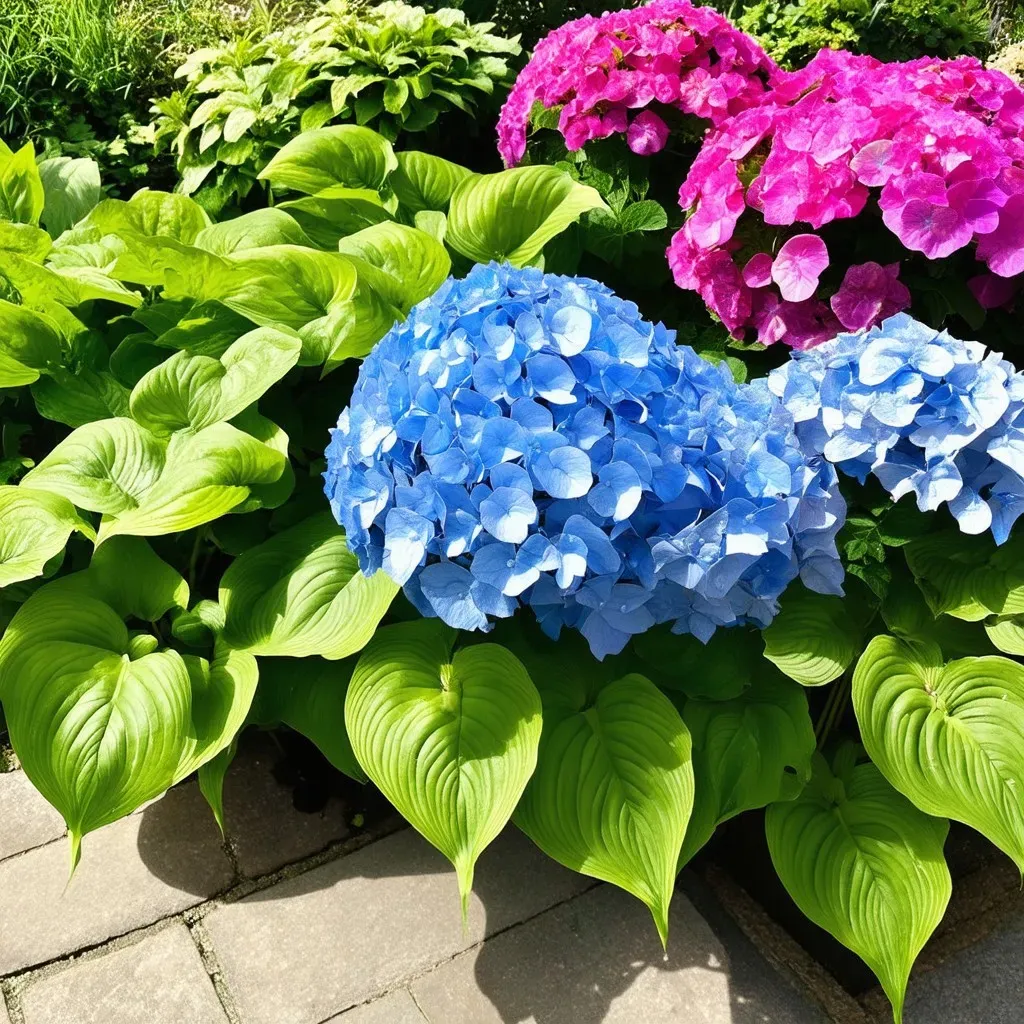Landscaping with hydrangeas and hostas is an effective way to create stunning, vibrant gardens that thrive in semi-shade. Both plants are versatile, easy to grow, and can elevate the aesthetics of any outdoor space. Hydrangeas showcase large blooms, while hostas offer lush foliage, making them a perfect pairing for any garden design.
The Perfect Pair: Hydrangeas and Hostas
When it comes to garden creation, few combinations rival the beauty of hydrangeas and hostas. The large, showy flower clusters of hydrangeas can illuminate your garden, while the varied foliage of hostas provides texture and depth. Knowing how to successfully integrate these two will ensure your landscape stands out.
Choosing the Right Varieties
Selecting the right varieties of hydrangeas and hostas can completely transform your landscape. Hydrangeas come in several types, including:
- Bigleaf (hydrangea-types/unlock-the-secrets-of-hydrangea-macrophylla-the-ultimate-guide-to-care-and-varieties/">hydrangea macrophylla): Known for its large blooms that can be either pink or blue, depending on soil pH.
- Panicle (Hydrangea paniculata): These are hardy and produce cone-shaped flower clusters in white, turning pink as they mature.
- Smooth (Hydrangea arborescens): These feature softer flowers and are excellent for naturalistic designs.
As for hostas, they also come in a myriad of shapes, sizes, and colors. A few popular choices include:
- Hosta ‘Sum and Substance’: A large, gold-leaved variety known for its robust performance.
- Hosta ‘Patriot’: This is a smaller variety with striking white margins that contrast beautifully with the blue-green center.
- Hosta ‘Blue Angel’: Offers large, blue leaves and can grow to impressive sizes, providing a bold statement in shade gardens.
Planting and Care Tips
Soil Requirements
Both hydrangeas and hostas thrive in well-drained, rich soil. Here’s a brief table outlining their soil preferences:
| Plant | Soil Type | pH Level |
|---|---|---|
| Hydrangea | Moist, well-drained | 5.2 to 6.5 (for blue) / 6.0 to 7.0 (for pink) |
| Hosta | Moist, well-drained | 6.0 to 7.5 |
Light and Watering
- Hydrangeas prefer morning sun and afternoon shade, while some varieties can tolerate partial sun.
- Hostas thrive in the shade but can adapt to dappled light. They require consistent moisture, so make sure to water them regularly, especially during hot months.
Layering and Design Techniques
Using hydrangeas and hostas together allows for multiple design techniques that add dimension to your garden. Some effective strategies include:
- Layering: Place taller hydrangea varieties towards the back and shorter hostas in the front.
- Borders: Establish an elegant border by creating a continuous curve of hostas, interspersed with hydrangeas at focal points.
- Groupings: Group similar varieties together for visual impact. For instance, a cluster of blue hydrangeas among green hostas creates an eye-catching tableau.

Blooming Periods and Seasonal Interest
One of the attractive aspects of hydrangeas and hostas is that they offer seasonal interest.
- Hydrangeas bloom in late spring to summer, providing vibrant color when Other plants may still be dormant.
- Hostas, though they bloom later in the summer, have lush foliage that can maintain garden interest throughout the year.
Here’s a simple chart to summarize the blooming periods:
| Plant | Bloom Time |
|---|---|
| Hydrangea | Late spring to summer |
| Hosta | Late summer |
Incorporating Additional Plants
For a more dynamically layered aesthetic, consider pairing hydrangeas and hostas with other Companion Plants. Here are some effective additions:
- Ferns: Their feathery leaves complement both the broad leaves of hostas and the rounded clusters of hydrangeas.
- Astilbe: Provides airy plumes that can add a contrasting height and texture.
- Heuchera (Coral Bells): Offers colorful foliage options that can add visual interest throughout the year.
FAQs
Q: What are the Best Hydrangeas and hostas for a beginner gardener?
A: Bigleaf hydrangeas and hosta ‘Patriot’ are among the best choices for beginners due to their forgiving nature and hardiness.
Q: How often should I water my hydrangeas and hostas?
A: Water them thoroughly at least once a week, or more frequently in dry spells, ensuring the soil is moist but not soggy.
Q: Can hydrangeas and hostas be planted in pots?
A: Yes, both plants can thrive in pots. Make sure to choose a sufficiently large pot with good drainage and use high-quality potting soil.
Q: Are hydrangeas and hostas deer-resistant?
A: While deer may nibble on them when food is scarce, particularly robust varieties like ‘Sum and Substance’ hosta are relatively deer-resistant.
Q: How do you control pests on hydrangeas and hostas?
A: Regularly inspect your plants and remove any affected leaves. Consider using organic insecticidal soap for heavier infestations.
Conclusion
Landscaping with hydrangeas and hostas can significantly enhance your outdoor aesthetic while providing low-maintenance options that thrive in semi-shade. By understanding their unique growing conditions, proper placement, and companion planting strategies, you can create a harmonious garden that offers beauty year-round.
For more information on growing hydrangeas and hostas, you can refer to Raintree Gardens.



